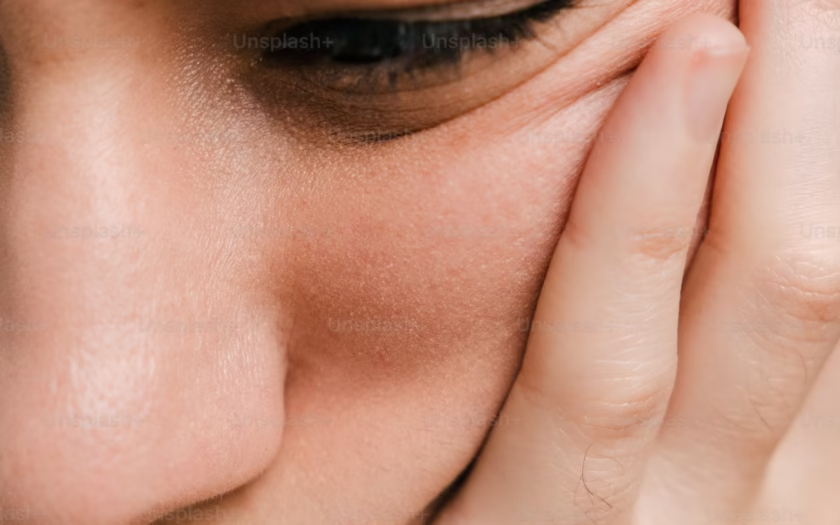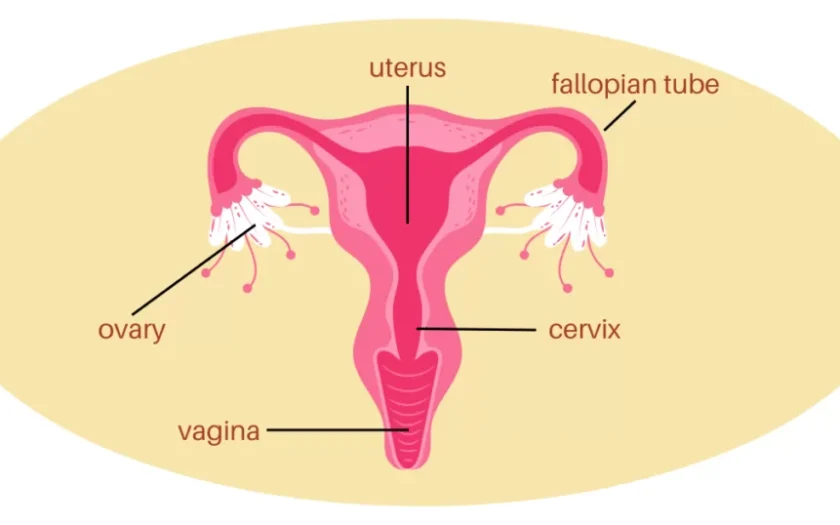Oily skin occurs when the sebaceous glands are overactive. According to research, 75% of people aged 15-20 years have oily epidermis. Sebum (sebum) secretion can be controlled.
What are the different skin types?
Skin type depends on its moisturization, sensitivity and sebum activity. The last criterion affects the tendency to acne. Facial skin types:
- normal skin type. Normal skin is sufficiently moisturized, practically free of rashes and pigmentation. It is characterized by barely visible pores and uniform color, well tolerates cosmetics;
- dry skin type. Due to moisture deficiency, there is a feeling of tightness, which passes after the use of moisturizers. Pores are weakly expressed, the complexion is dull, areas with flaking are noticeable. There is a tendency to irritations and hypersensitivity;
- oily skin type. Sebaceous glands secrete a large amount of secretion, which causes facial shine. It is characterized by enlarged pores, a tendency to rashes and black dots (comedones). Sebaceous shine is most pronounced in the T-zone (on the nose, forehead, chin);
- combination skin type. Combined skin combines the signs of several types. For example, on the cheeks may be noticeable symptoms of dryness, and in the T-zone – oily shine. Pores are enlarged, there are comedones.
There is also problem skin (has pimples, acne, acne) and sensitive skin (more susceptible to the negative effects of ultraviolet light, high and low temperatures, redness, vascular networks and allergic reactions to cosmetics may appear). Skin type can change over the course of a lifetime.
How do you determine your skin type?
You can determine your skin type by yourself at home. Test to determine your skin type:
- Wash your face thoroughly with a foam or gel, cleansing it of cosmetics and impurities.
- Blot your face with a towel.
- Wait 30 minutes for the sebaceous glands to become active.
- Examine your skin in a mirror. Recognize dry skin by flaky areas and a feeling of tightness. Oily skin is shiny, has rashes and areas with enlarged pores. With a combined type in the T-zone on the face is noticeable shine, and on other parts of the face – dryness.
In addition, to determine the type of skin will help dry tissue, which should cover the face 30 minutes after cleansing. After 20 seconds, the napkin is removed and examined: the presence of sebaceous spots indicates greasy skin, and their complete absence – the dryness. In case of combined type, the napkin shows faint sebaceous impressions in the T-zone.
What does oily skin look like?
Oily skin is characterized by increased sebum production by the glands. Visually noticeable sebaceous shine, enlarged and clogged pores. Porous skin is more prone to the appearance of rashes, so there are blackheads, comedones, possibly also acne and postacne (acne scars) on the face.
Greasy skin can appear in men and women of any age. However, most often the problem is faced by teenagers and adults under the age of 30. Shine, rashes and enlarged pores can appear not only on the face, but also on the head, abdomen, back, neck and chest.
What are the causes of oily skin?
The cause of oily skin is the active production of sebum (secretion) by the sebaceous glands, which occurs during puberty (from the onset of secondary sexual characteristics to full adulthood). Peak activity is associated with hormonal changes in the body, which lasts until approximately 20 years of age. Other causes of oily facial skin are:
- genetic predisposition;
- environmental factors (air temperature, humidity);
- weight fluctuations and skin diseases;
- stress;
- consumption of foods with a high glycemic index (chocolate, baked goods, carbonated drinks).
Oily facial skin can occur during pregnancy or menstruation due to changes in progesterone levels. The production of sebum under stress is associated with an increase in the level of the hormone cortisol in the body. In men, oily skin is more common than in women due to higher levels of testosterone.
What should I do if I have oily skin on my face and body?
Visually make the skin less oily with the help of care and decorative cosmetics (matting wipes, powder). However, oily porous skin should be cared for on a permanent basis, adjusting the lifestyle. General recommendations for the care of oily skin of the face and body:
- Cleansing the skin twice a day – morning and evening.
- Avoiding aggressive cosmetics and comedogenic cosmetics (with almond oil, beeswax, cetyl alcohol, oleic acid), which provokes the appearance of black dots.
- Use of a soothing toner.
- Moisturizing oily skin (over-dried skin produces more sebum).
- Use of sunscreen without oils in its composition.
To reduce the oiliness of the skin of the face and body, it is necessary to monitor the diet – it is recommended to limit the consumption of sugar, alcoholic beverages, dairy products, spicy food.
Care for oily facial skin
Care for oily facial skin should include cleansing, toning, moisturizing in the morning and evening. It is not recommended to use products containing alcohol, which dry out the epidermis. Stages of care for oily facial skin in the morning:
- Cleansing. You can cleanse the porous skin of the face with the help of foam or gel for washing. Cosmetic means should deeply penetrate into the sebaceous glands, without irritating the skin. In case of active sebum production after sleep, the skin should be cleaned twice.
- Toning. Toners restore the skin’s natural pH (acid-alkaline balance), which cleansers can disrupt. Using a toner during your morning facial oily skin care routine has a soothing and anti-inflammatory effect.
- Moisturizing and sun protection. Applying a moisturizer helps control sebum production and reduces the sebaceous glands’ need to secrete more secretion. In addition, it is recommended to apply sunscreen.
During the day, you can use mattifying wipes to remove oily shine. You can also use thermal water to maintain the normal moisture level of the epidermis.
Care for oily facial skin at home should also be carried out in the evening. Stages of evening care for oily skin:
- Cleansing. Allows you to remove the remnants of makeup, sunscreen and dirt. After de-makeup, you can use a product to deep cleanse the pores and normalize the secretion of sebum.
- Toning. A product that restores the pH of the skin can be used twice a day. Toner can be replaced by exfoliating products used two to three times a week.
- Moisturizing. In the evening it is necessary to moisturize the skin with non-comedogenic products that do not clog pores.
Between toning and moisturizing to regulate the release of skin fat can be applied active agents (serums) and peeling, contributing to the exfoliation of dead parts of the epidermis. No more than twice a week apply masks that dry the skin and provide a matting effect. It is recommended to use cosmetics for oily facial skin, containing niacinamide, retinoids, L-carnitine, green tea. A dermatologist or cosmetologist can help you to choose care cosmetics.
Care for oily body skin
Oily skin care includes the mandatory steps of cleansing and moisturizing. Stages of oily skin care in the morning and evening:
- Cleansing from impurities with gel, soap, foam.
- Moisturizing with lotion, milk, cream.
- Exfoliation of dead particles with scrubbing and peeling (once a week).
If women and men have oily body skin, it is necessary to refuse cosmetics containing synthetic agents (glycolic acid, synthetic alcohol, dioxin), which destroy the protective properties of the skin and violate its pH. It is also necessary to monitor the water temperature when bathing, which should not be too hot or cold.
Oily scalp care
The cause of oily scalp is excessive production of sebum, which causes the hair to become greasy quickly. Oily skin can be associated with seborrheic dermatitis, heredity, the occurrence of acne on the forehead and excessive scalp washing. Oily scalp care tips:
- Wash your scalp once every three days.
- Use shampoos with green tea, aloe vera, coconut oil.
- Rinse hair thoroughly after washing.
- Use hair conditioners.
- Clean your comb regularly.
Shampoo for oily skin should contain ketoconazole, selenium sulfide, sodium sulfacetamide, benzoyl peroxide. Ketoconazole reduces scalp flaking and itching, selenium sulfide is used to treat dandruff, sodium sulfacetamide helps fight rashes, and benzoyl peroxide helps fight acne. It is also recommended to dry your hair naturally and keep your bedding clean.
How to care for oily facial skin in teenagers?
Oily skin in a teenager is associated with hormonal changes in the body. The peculiarity can be present until full puberty. Stages of care for oily skin in adolescence:
- Cleansing with products (gels, foams) containing salicylic acid, benzoyl peroxide, glycolic acid.
- Moisturizing with oil-free creams.
- Sun protection with zinc oxide cream.
It is necessary to use products without alcohol, abrasive elements, retinoids, which can aggravate acne and dry out the skin. Care cosmetics for problem skin are prescribed by a dermatologist.
What happens if you care for oily skin incorrectly?
The main mistakes in the care of oily skin type is the lack of cleansing. Care without cleansing products can lead to the appearance of rashes. Other mistakes in caring for oily skin on the face and body:
- over-cleansing. Leads to a decrease in the protective barrier of the skin, dries and irritates the epidermis;
- overuse of exfoliants. Exfoliating more than twice a week can irritate and inflame the skin;
- lack of moisturization. Moisturizing helps regulate sebum production and creates a barrier for moisture retention;
- excessive use of mattifying products. Constant matting of the skin can disrupt its pH balance, dry out the epidermis and increase sebum production.
In the presence of inflammation on the skin, it is recommended to wipe the skin with paper towels. If cloth towels are used, it is necessary to ensure their cleanliness. It is also necessary to regularly clean cosmetic tools (brushes, sponges) – makeup residues, dust, dirt on the tools can provoke the development of bacteria.
Why do pimples appear on oily skin?
Oily skin is prone to rashes because the production of excessive amounts of sebum leads to blockage of the ducts. The sebum stagnates in the ducts and becomes infected, leading to black spots, pimples and acne. Possible causes of pimples on the face and back:
- alergic reaction;
- heredity;
- diseases of the gastrointestinal tract;
- improper diet;
- overweight;
- stress;
- endocrine diseases.
Acne on the back (bacne) often occurs due to decreased levels of estrogen in women and androgens in men. The rash can be inflammatory (comedones, pustules, papules) and non-inflammatory (black dots).
How to remove enlarged pores?
Enlarged pores on the face and body are one of the main symptoms of oily skin. You can remove enlarged pores by using:
- water-based, oil-free products;
- thoroughly cleansing your face morning and night;
- using exfoliants once or twice a week;
- moisturizing the skin daily.
To get rid of enlarged pores on the nose, cheeks, forehead, it is necessary to wash off makeup before going to bed. The accumulation of dirt, grease and bacteria in the pores leads to their blockage and the appearance of pimples.
How to get rid of pimples on the face and back?
To treat pimples, acne, and acne, you need to seek help from a dermatologist. At the first appointment, the doctor conducts a visual examination and collects anamnesis, after which he can prescribe a dermatoscopy (examination of the skin using a special device), as well as a consultation with a gastroenterologist. Acne treatment methods:
- drug therapy (bactericidal and anti-allergic drugs);
- mesotherapy (injection of vitamins, microelements);
- use of cosmetics (retinoids);
- plasmolifting (injection of blood platelet mass into problem areas of the skin).
If acne appears on the back or face, it is contraindicated to squeeze out pimples on your own due to the risk of scars.
Is it possible to turn oily skin into normal skin?
You can get rid of oily skin with careful care, which includes cleansing and moisturizing. If the increase in sebum production is associated with puberty in a teenager, the skin condition can normalize after the end of puberty. It is also necessary to monitor your diet, limiting the consumption of sweets, fatty foods, and dairy products.
How to reduce oily skin with folk remedies?
You can reduce oily skin with home remedies. Folk remedies for oily skin:
- natural honey mask;
- aloe vera gel;
- oatmeal mask;
- jojoba oil;
- clay mask;
- facial scrub with ground almonds.
You can also remove oily skin with a mask made of egg whites. Ice cubes are not used for oily skin, since they do not affect the production of sebum.
Diet rules for oily skin
If you have oily skin on your face and head, you need to stick to a high-protein diet. Foods that you shouldn’t eat if you have oily skin:
- dairy products;
- sweets;
- spicy foods;
- sweet carbonated drinks;
- alcoholic beverages.
If you have oily skin, you should eat fresh fruits and vegetables, legumes, nuts, fish, and lean meats. You should also drink up to two liters of water per day.
How to choose cosmetics for oily skin?
Care cosmetics for oily skin should include cleansers, moisturizers and sunscreens. Choosing cosmetic care for oily skin:
- Cleanser. Cosmetics should effectively remove oil and dirt, but not cause tightness. It is recommended to choose water-based products and double cleansing gels.
- Moisturizer for oily skin. Products can be water-based, but do not contain lanolin, sunflower and mineral oils. It is recommended to choose moisturizers for oily skin that do not clog pores, for example, with hyaluronic acid, ceramides and niacinamides.
- Face serum. Serum for oily skin contains salicylic acid, retinol and niacinamide, which accelerate the process of regeneration of epidermal cells.
An important criterion when choosing decorative cosmetics is a non-aggressive composition. Non-comedogenic cosmetics, including powders and foundations, do not contain components (for example, lanolin, cetyl alcohol, beeswax) that contribute to the formation of blackheads.
How does oily skin age?
Skin aging does not depend on fat production – the process is affected by the breakdown and loss of elastin and collagen fibers in the epidermis. Oily skin looks more elastic and moisturized, compared to dry skin, on which wrinkles are more noticeable. The first signs of age appear at 25-30 years. Aging of oily skin is manifested by its pigmentation, thinning, and enlarged pores. It is recommended to use cosmetics that moisturize, tone and saturate the skin.



